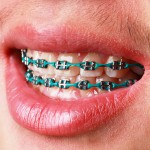
White spot lesions (WSLs) are a common adverse effect of orthodontic treatment reportedly being seen in between 2% to 97% of patients undergoing fixed appliance therapy. Multi-bracket appliances are associated with development and retention of plaque so the aim of this review was to assess whether prophylactic procedures performed by the dental hygienist are efficacious in reducing plaque and the risk of demineralisation.
Methods
Searches were carried out in the Medline, Embase and Cochrane CENTRAL databases for randomized clinical trials (RCTs), controlled clinical trials (CCTs), and prospective studies conducted in patients with fixed banded orthodontic appliances on both arches for at least 12 months. Only English language studies were considered. Primary outcomes were plaque index (PI) and gingival index (GI) with caries and white spot lesions as secondary outcomes. Study quality was assessed using the Cochrane risk of bias tool and Newcastle-Ottawa Scale.
Results
- 10 studies were included (8 RCTs; 1 CCT; 1 before and after study).
- 1 RCT was considered to be at low risk of bias, 6 at unclear risk and 1 at high risk.
- A narrative summary of findings related to plaque index, gingival index, hygienist intervention, communication techniques, caries and white spot lesions was presented.
Conclusions
The authors concluded
The quality of the retrieved researches ranged from low (one study) to high (one study). Six controlled trials were considered at unknown risk of bias. Data showed that regular patient motivation sessions and mechanical tooth cleaning by a professional dental hygienist help maintaining good oral hygiene during fixed orthodontics.
Commentary
The original review protocol indicated that the data synthesis was likely to be descriptive rather than qualitative. This is perhaps a little disappointing given that all except two of the studies recorded plaque and gingival indices. While a range of indices were used were used it may have been helpful to indicate why an analysis using standard mean differences was not carried out. The studies included vary in size from 40- 400 and included a range of interventions with a majority showing a benefit. With the volume of orthodontic treatment being carried out and the potential for adverse effects having good evidence for preventive regimes during treatment would be helpful so high quality appropriately powered studies are needed. It is worth noting that the recent Cochrane review by Benson et al (2012) did find moderate evidence to support the application of fluoride varnish during orthodontic treatment to prevent WSLs.
Links
Original review protocol – PROSPERO 42012002549
Migliorati M, Isaia L, Cassaro A, Rivetti A, Silvestrini-Biavati F, Gastaldo L, Piccardo I, Dalessandri D, Silvestrini-Biavati A. Efficacy of professional hygiene and prophylaxis on preventing plaque increase in orthodontic patients with multibracket appliances: a systematic review. Eur J Orthod. 2014 Sep 22. pii: cju044. [Epub ahead of print] Review. PubMed PMID: 25246605.
Benson PE, Parkin N, Dyer F, Millett DT, Furness S, Germain P. Fluorides for the prevention of early tooth decay (demineralised white lesions) during fixed brace treatment. Cochrane Database of Systematic Reviews 2013, Issue 12. Art. No.: CD003809. DOI: 10.1002/14651858.CD003809.pub3.

Don’t miss – Oral hygiene: professional cleaning helped during orthodontic treatment http://t.co/x5KUG5mhsK
[…] Dental Elf – 19th Jan 2015 – Oral hygiene: professional cleaning and motivation helped d… […]